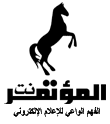Jamil Jadabi Almotamar.net - Reparation and maintenance works recently made in Paris on a Yemeni statue made of bronze revealed inscription in Munad calligraphy on the upper part of the statue body counted in 12 lines. A Yemeni antiquities expert told almotamar.net the inscription denoted the name "Tarathit" which is the name of the person who presented the statue to goddess Ilmaqa, the goddess of the moon in the Sabaean religions.
Secretary General of the National Museum in Sana'a Abdulaziz al-Jandari, who attended the ceremony of displaying the statue in the Louvre Museum after the processes of reparations at the Louvre Museum in Paris, said reparation work disclosed a technology of statures manufacture almost unique at that historical period as there is no similarity of it in contemporary civilizations with regard to the size, indicating that the number statues in the world of its size is no more than five.
The official and exert in archaeology talked about a technique in extracting metals from ores and also in metal forging and formation that indicated the skill of the ancient Yemeni artist in making bronze statues. In his statement to almotamar.net he clarified that reparation work also revealed that the statue was stuffed with burnt mud, a technique not known to be found in most bronze statues in the world.
On his part the secretary general of the Yemeni National Museum reparation of the statues showed the impossibility of displaying it standing on a base due to loss of legs and thinness of the bronze it is made of in addition to heavy weight of the burnt mud with which it is stuffed inside its body. Therefore, he said it was a must to display it in a position lying on its back and a special stand was designed for that to display it in this position.
The Louvre Museum administration organised a ceremony for displaying the statue on Tuesday 15 May 2007 attended by director general of the Louvre, Dr Abdullah Bawazir, and head of the State authority for Antiquities and Museums, the Yemeni ambassador to France Amir al-Aidarous and a large audience of French scientists in archaeology and inscriptions.
The Yemeni statue was transported to Paris in late year of 2006 for maintenance and reparation at factories of Louvre Museum and the work took five months. Display of the statue, dating to the 6th century BC in the Louvre, will continue until the mid of next October to be afterwards taken back to its place at the National Museum in Sana'a.
The statue remained for long time left inside a small room at one of the National Museum stores. It was bought in Al-Jawf area, among other pieces of antiquities for YR50 million in the mid of 2004.
A French expert in antiquities affirmed the statue and other antiquities indicate that Yemen is of the rich ancient civilizations like the Mesopotamia and the Pharaohs but she expressed her regret that unearthing antiquities is done by smugglers rather than by specialized scientists who can learn much about the statue from the site of its unearthing it.
|

